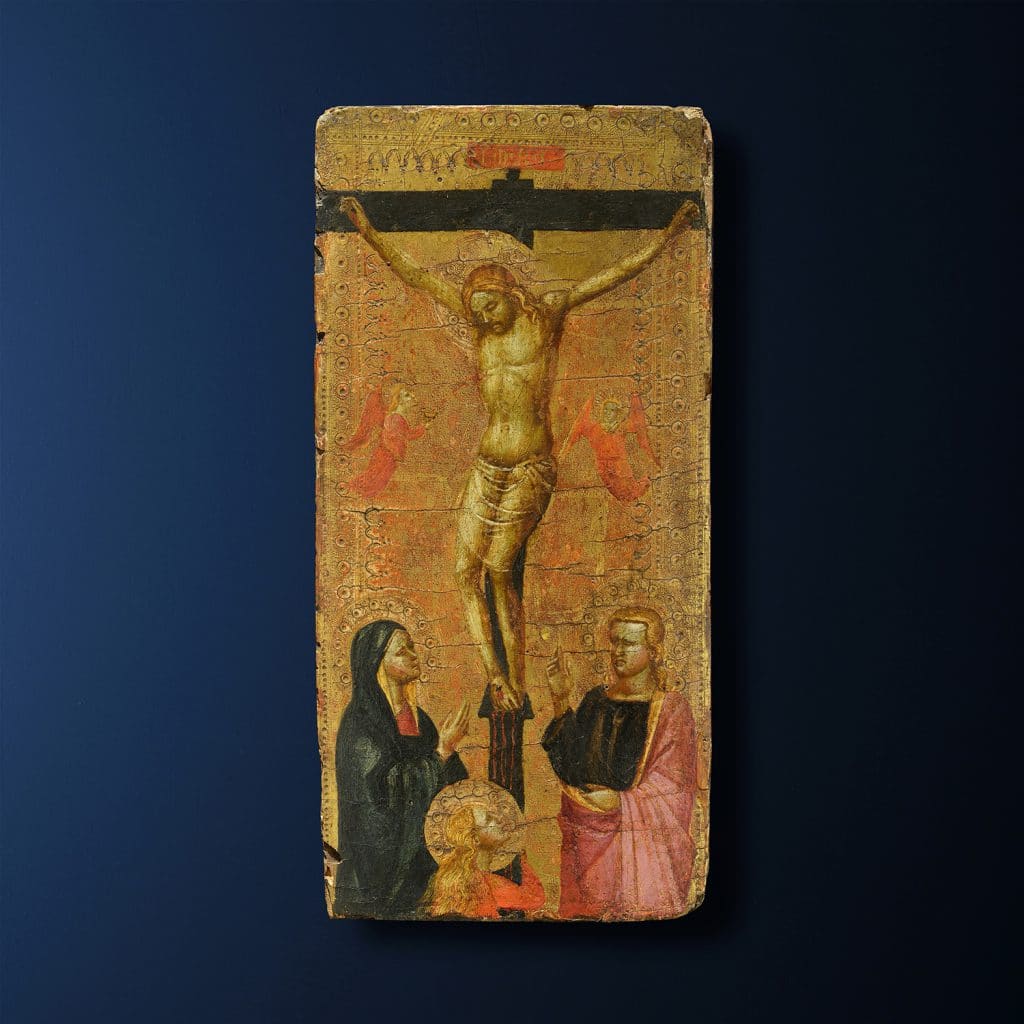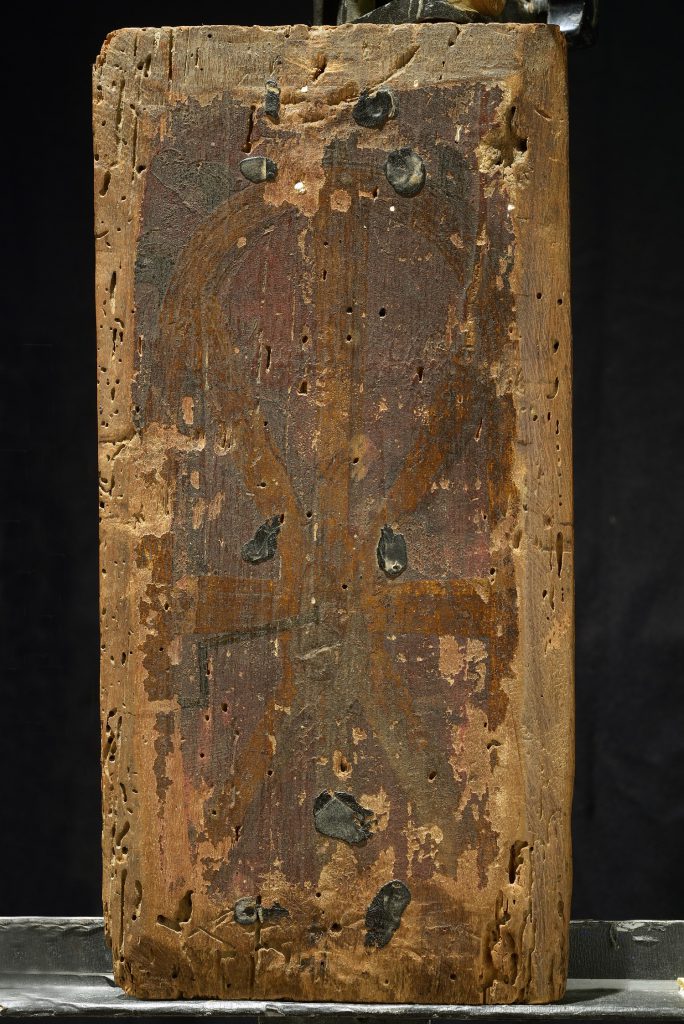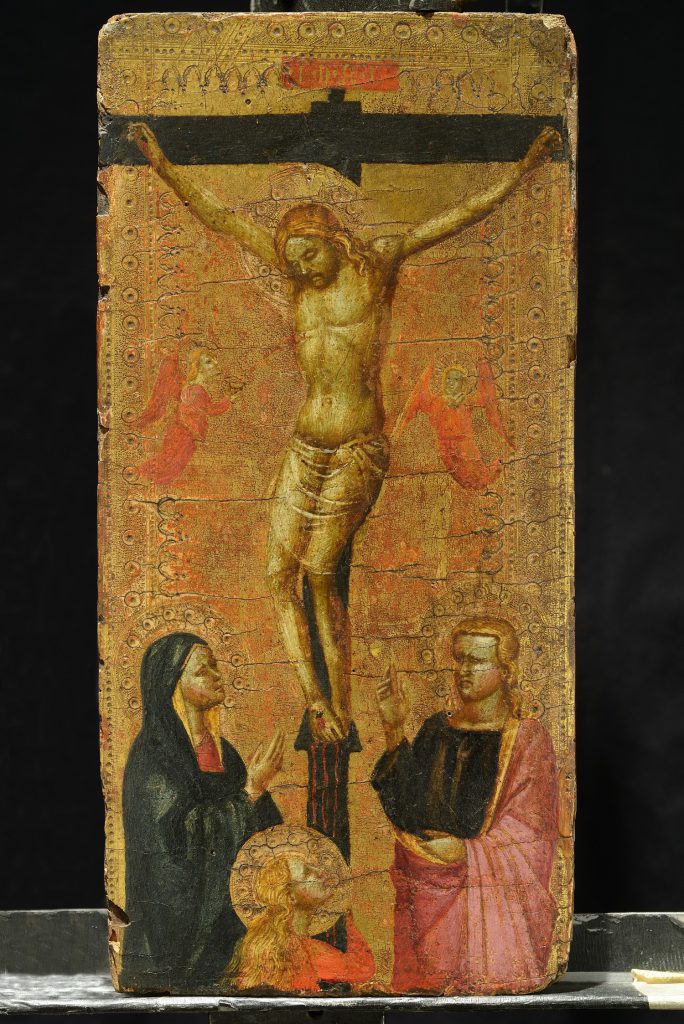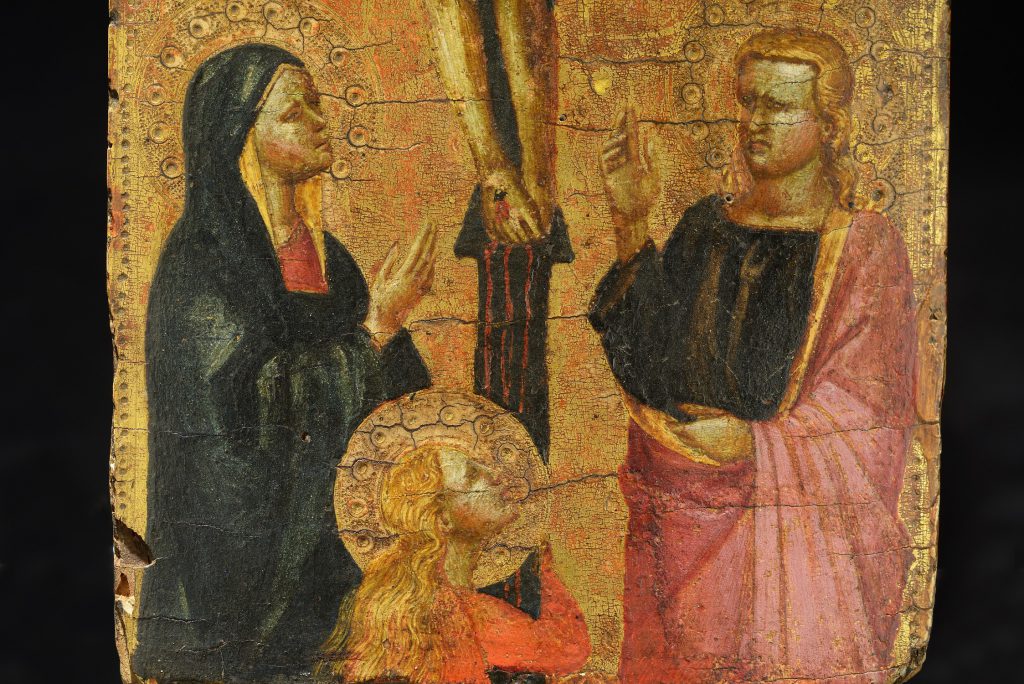- Crucifixion, maestro della misericordia dell’accademia, third quarter of the fourteenth century
In the center of the tablet is depicted Jesus crucified, in the typical attitude of Christus Patiens: slumped on the cross, his head resting on his chest, wearing a simple loincloth that encircles his hips. On the sides of the cross, which occupies the tablet for its entire width and almost for its entire height, there are the two seraphs with red tunics and wings, the one on the left intent on collecting the blood of Christ flowing from the wound in a chalice on the side.
At the foot of the cross, on the left, is the Virgin, a long blue cloak with golden lapels resting on her head, a painful expression on her face and her right hand raised to sadly point to her son. Below, in the center of the scene, Mary Magdalene painfully embraces the cross, her head turned upwards and her long blond hair loose on her shoulders; on the right is St. John, also heartbroken who is pointing to the body of Jesus.
The bottom is made entirely with gouache gilding, made by applying gold leaves on the wooden table previously prepared with an application of a bole, from which the characteristic reddish color emerges. The gold leaf is worked with a burin, to create ornamental motifs that delimit the scene, but also in the haloes of the characters, made with savings on the same leaf.
On the back of the table, instead, a toothed wheel is depicted.
Dimensions: 29.5 x 14.5 x 1.3 cm (11,6 x 5,7 x 0,5 in)
CODE: ARTPIT0001175


As reported in Stella Sonia Chiodo’s report, the painting is the right door of a small tabernacle with doors, and was reduced in size during the disassembly of the work, as evidenced by the cut in the lower part, which originally had to include the characters at the foot of the cross in full length and the top of Mount Golgotha. The tabernacle must have come from an environment linked to the cult of Saint Catherine, as evidenced by the wheel painted on the back of our tablet, symbol of the martyrdom of the saint, which could be the hospital dedicated to her and built in the second half of the fourteenth century in Florence, on commission by Alessandro di Talano dei Filipetri.
The certain attribution to the Master of Mercy is due to a stylistic analysis for which punctual and precise comparisons are possible with his pictorial corpus known to us, as can be found in both publications in which the painting is presented. The Master of Mercy has been identified, thanks to the support of precise biographical evidence – re-proposed by Chiodo in his report – with Giovanni Gaddi, eldest son of Taddeo and brother of Agnolo.
– R. Offner, A Legacy of Attribution, edited by H. B. J. Maginnis, New York, 1981, p. 13 fig. 27;
– S. Chiodo, A Critical and Historical Corpus of Florentine Painting. The Master of Mercy and Matteo di Pacino, Sec. IV, Vol. Florence, 2011, p. 161, pl. X.



FineArt is the new ambitious Di Mano in Mano project that offers an exclusive choice of antiques and design works, presenting them for their singularity and uniqueness.

FineArt by Di Mano in Mano is a team of experts at your service to enhance furniture, paintings, finest antiques, art and design masterpieces at best.
Di Mano in Mano
Via Castellazzo 8, Cambiago (MI)
20040